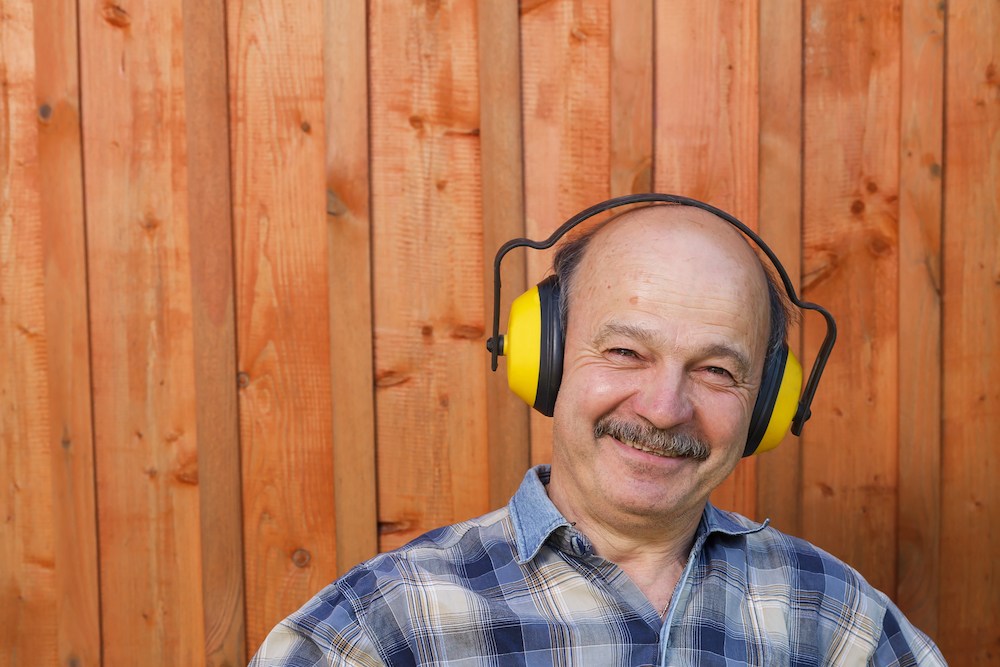How to Protect Your Hearing During the Fall Season
Fall brings seasonal changes to your routine and activities that can

By: admin | January 31, 2025
Taking your child to their first hearing test is an important step in supporting their growth and development. Good hearing helps children learn language, connect with family and friends and participate fully in school activities.
You know your child best, and you might notice signs that suggest they need their hearing checked. Maybe they often ask you to repeat things, or they turn up the TV volume higher than usual. These observations matter because catching and addressing hearing issues early can make a big difference.
Many children feel unsure about new healthcare experiences, which is normal. But a hearing test doesn’t hurt – it’s more like playing a listening game. When we prepare children for what to expect, they usually feel more comfortable and confident about the experience.
Your child’s hearing health is part of their overall well-being, just like regular check-ups at the doctor or dentist. By making hearing tests a normal part of their healthcare routine, we help ensure they have the tools they need to learn, play and grow.
Recognizing possible signs of hearing loss in children is crucial for ensuring early intervention and support. Hearing loss can manifest differently depending on the child’s age, as communication and social behaviors develop over time. Paying attention to these signs can help parents, caregivers and educators identify potential issues and seek professional evaluation.
In young children, hearing loss may become evident when they fail to meet developmental milestones related to sound and speech. Infants typically respond to loud sounds by startling or turning their heads toward the source. If a baby doesn’t react to sudden noises, like a door slamming or a dog barking, it could indicate hearing difficulties. Additionally, infants usually begin babbling by 4 to 6 months, mimicking the sounds they hear around them. A delay in babbling or a lack of variation in vocalizations may signal a problem.
Toddlers with hearing loss might struggle to understand simple instructions or respond to their name. They may rely heavily on visual cues, like gestures or facial expressions, to interpret what others are saying. Limited vocabulary or difficulty forming two-word sentences by age two can also be a red flag. These signs often indicate that the child is not hearing enough language to develop speech and communication skills.
In preschool-aged children, hearing loss can impact their ability to learn and socialize. Children at this stage are usually exploring more complex language, and delays in speaking clearly or forming full sentences may become noticeable. A child who frequently asks for repetition, like saying “What?” or “Huh?” often, might be struggling to hear conversations. They might also misunderstand instructions or give inappropriate responses due to missing parts of what was said.
Behavioral signs are also common in this age group. A child with hearing loss may seem inattentive, distracted or unengaged, which could be mistaken for behavioral issues or a lack of interest. They might prefer playing alone rather than interacting with peers, as they find communication challenging. Another clue could be a reliance on watching people’s faces closely, suggesting they are attempting to lip-read to fill in gaps in what they cannot hear.
As children grow older and enter school, hearing loss can affect academic performance, communication and social relationships. A common sign is difficulty following along in the classroom, especially in group discussions or noisy settings. Teachers may notice that the child doesn’t respond when called or has trouble staying focused on verbal instructions. Struggling with subjects like reading and language arts can also be linked to undiagnosed hearing loss, as the child may have trouble understanding and processing spoken language.
Socially, adolescents with hearing loss might avoid group activities or complain that they “can’t hear” their friends in noisy environments. They may display frustration, fatigue or irritability from trying to keep up with conversations. Some teens may even withdraw or show signs of low self-esteem, as hearing difficulties can make them feel different from their peers. Other signs include turning up the volume on electronic devices or sitting very close to the television, indicating that they need sound to be louder to process it.
Figuring out when to schedule your child’s first hearing test can be confusing. Many parents wonder, “When is the right time?” Hearing specialists generally recommend that the first hearing test should be conducted by the age of three. Testing early can detect potential hearing issues, allowing for quick intervention if needed.
However, if you notice any signs of possible hearing loss before this age, it’s important to consult a professional. Your instincts as a parent are valuable. If something seems off with your child’s responses or behavior related to sound, don’t hesitate to have it checked.
Timing is an important factor in addressing potential hearing concerns in children. Just as planting a seed at the right time can result in a healthy plant, scheduling your child’s first hearing test at the right time can contribute to optimal auditory development and overall wellbeing.
A child’s hearing test is a simple, non-invasive process designed to evaluate how well they hear sounds at different pitches and volumes. The methods and evaluations used depend on the child’s age, developmental level and ability to respond to instructions. These tests are essential for identifying any hearing issues early, allowing for timely intervention to support their communication and learning.
For very young children who are unable to actively respond, objective tests are often used. One common method is the otoacoustic emissions (OAE) test, which measures the response of the inner ear (cochlea) to sound. A small probe is placed in the child’s ear canal to send gentle sound waves and measure the echo that comes back. This test is quick, painless and often performed while the child is asleep.
Another method is the auditory brainstem response (ABR) test, which assesses how well the auditory nerve and brain pathways respond to sound. Small electrodes are placed on the child’s head to measure brain activity in response to sounds played through earphones. This test is particularly useful for infants or toddlers who cannot give behavioral feedback about what they hear.
For slightly older children, behavioral tests may be introduced to evaluate their hearing. One popular method is visual reinforcement audiometry (VRA), which is designed for children between 6 months and 2.5 years old. In this test, the child sits in a soundproof room with speakers or earphones and is taught to look toward a toy or screen when they hear a sound. When they respond correctly, they are rewarded with a visual cue, like a light-up toy or animated image, making the test engaging and fun.
For children around 2.5 to 5 years old, conditioned play audiometry (CPA) is commonly used. During CPA, the child participates in a game-like activity, like placing a block in a bucket or a ring on a peg whenever they hear a sound. This test helps evaluate hearing thresholds while keeping the child engaged and motivated.
Older children and teens usually participate in more traditional hearing tests, similar to those used for adults. A pure-tone audiometry test involves listening to tones at various frequencies and volumes through headphones and pressing a button or raising their hand when they hear a sound. This test determines the softest sound a child can hear at different pitches.
In addition to pure-tone testing, a speech audiometry test may be conducted. In this test, the child is asked to repeat words or point to pictures representing words they hear, allowing the specialist to assess their ability to understand speech at different volume levels. This type of evaluation helps identify whether the child has difficulty hearing speech in quiet or noisy environments.
It’s normal for your child to feel a bit nervous about their upcoming hearing test. But with the right guidance and support, you can help ease their worries.
Start by explaining what a hearing test is in terms they can understand. You could say, “A hearing test is like playing a game where you listen to different sounds.” Reassure them that it won’t hurt and it’s okay if they don’t hear every sound. Encourage them to view this as an adventure, much like going on a treasure hunt where the treasure is discovering how well their ears are working.
Preparing your child for their first hearing test is all about helping them feel comfortable and confident. Start by explaining the process in a way that makes sense for their age. For younger children, you might say, “We’re going to visit a special person who helps make sure your ears are working so you can hear all the things you love.” For older children, you can give them a bit more detail, like, “They’ll play sounds through special headphones, and you’ll tell them when you hear the sound.” This helps set expectations and removes the mystery, making the process feel more familiar.
It can also be helpful to make the hearing test sound fun. Many tests for young children involve interactive games, where they might be asked to turn their head toward a light or put a toy in a box when they hear a sound. Reassure them that the test is more like a game than a medical procedure. If possible, try to visit the clinic ahead of time so your child can see the room and the equipment they’ll be using, like the headphones or speakers. This can reduce fear and anxiety by making the environment seem less intimidating when the actual test happens. Additionally, explaining that the sounds they’ll hear are soft beeps or clicks and that they’ll need to stay still for just a short time can help them know exactly what to expect. It’s also important to mention that the test won’t hurt – it’s just to check how well their ears are working.
During the test, be present and offer comfort in whatever way works best for your child. Whether it’s holding their hand, sitting next to them or simply offering gentle reassurance, your calm presence will make them feel secure. If your child feels anxious, maintaining a positive, confident attitude will help ease their nerves. Another great idea is to bring along a familiar comfort item, like a favorite toy, blanket or stuffed animal, to help them feel more at ease. Once the test is done, be sure to celebrate and praise your child for being brave. Reinforce that they did something important for their health and that they handled it well. Positive reinforcement helps them associate the experience with something rewarding rather than something to be feared.
Your child’s hearing health is key to their overall well-being, and a hearing test is an important part of making sure they’re getting the support they need. You already know how essential it is to keep track of their growth and development, and addressing hearing concerns early can make a real difference in their ability to connect with the world around them. Preparing your child for a hearing test and reassuring them along the way can help turn the experience into something positive.
At Hearing At Home Mobile Hearing Center, we make it easy to take that next step. Serving Harrisonburg, VA, we’re here to support you and your child, ensuring their hearing is on track for a bright, successful future. If you have any questions or are ready to schedule, call us at (540) 908-9494 – we’re here for you every step of the way.

Fall brings seasonal changes to your routine and activities that can
By: admin | November 18, 2025

The way hearing care is viewed is gradually shifting. In the past, many
By: admin | September 24, 2025

Wearable technology has changed how we track our daily health – from
By: admin | May 23, 2025
